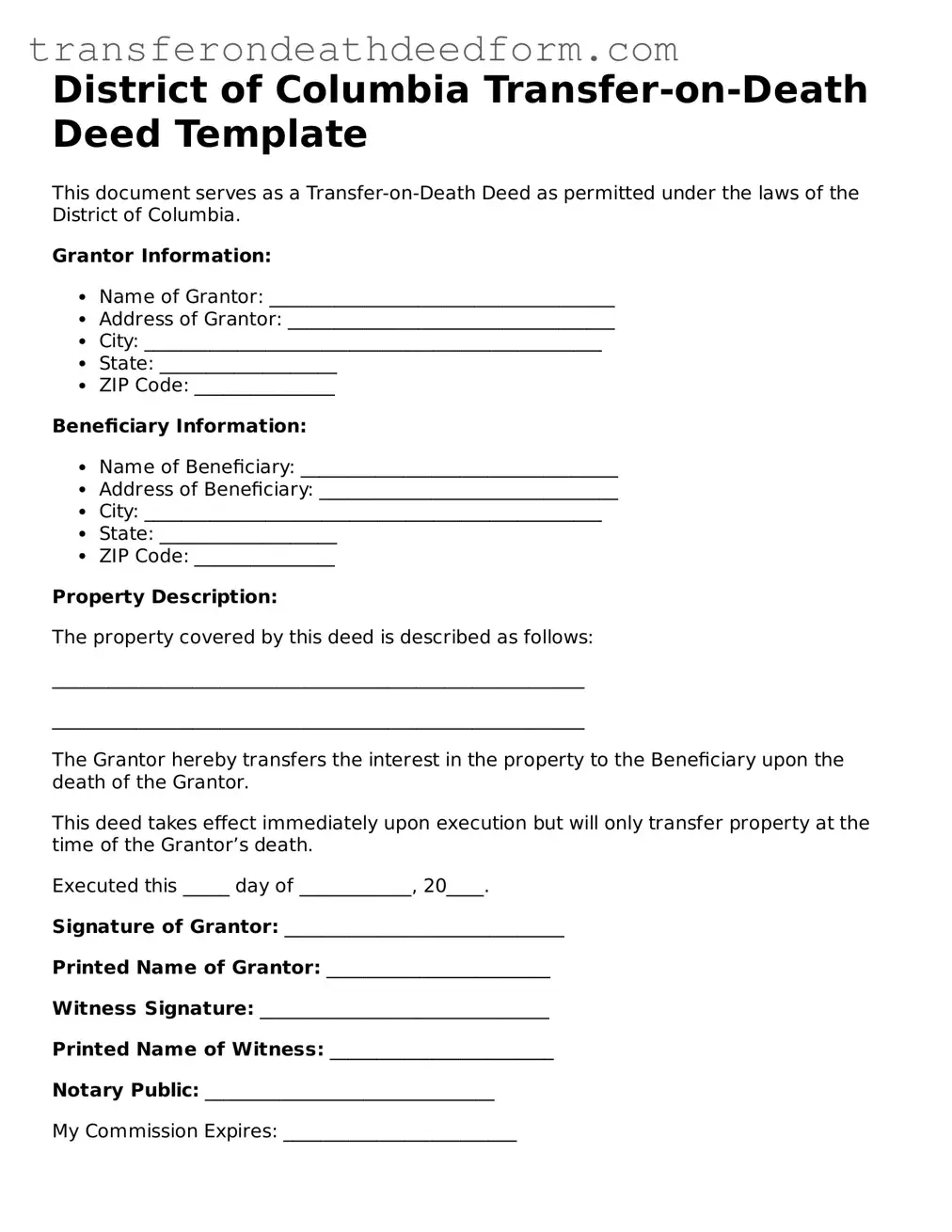District of Columbia Transfer-on-Death Deed Template
This document serves as a Transfer-on-Death Deed as permitted under the laws of the District of Columbia.
Grantor Information:
- Name of Grantor: _____________________________________
- Address of Grantor: ___________________________________
- City: _________________________________________________
- State: ___________________
- ZIP Code: _______________
Beneficiary Information:
- Name of Beneficiary: __________________________________
- Address of Beneficiary: ________________________________
- City: _________________________________________________
- State: ___________________
- ZIP Code: _______________
Property Description:
The property covered by this deed is described as follows:
_________________________________________________________
_________________________________________________________
The Grantor hereby transfers the interest in the property to the Beneficiary upon the death of the Grantor.
This deed takes effect immediately upon execution but will only transfer property at the time of the Grantor’s death.
Executed this _____ day of ____________, 20____.
Signature of Grantor: ______________________________
Printed Name of Grantor: ________________________
Witness Signature: _______________________________
Printed Name of Witness: ________________________
Notary Public: _______________________________
My Commission Expires: _________________________
